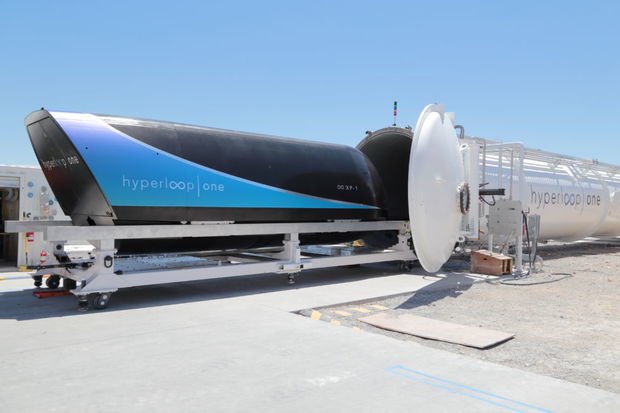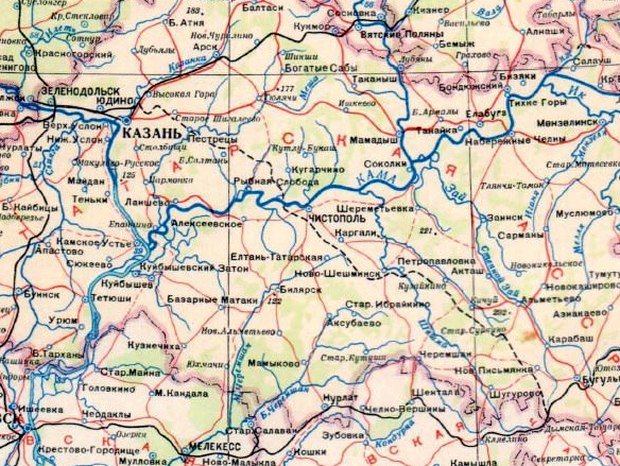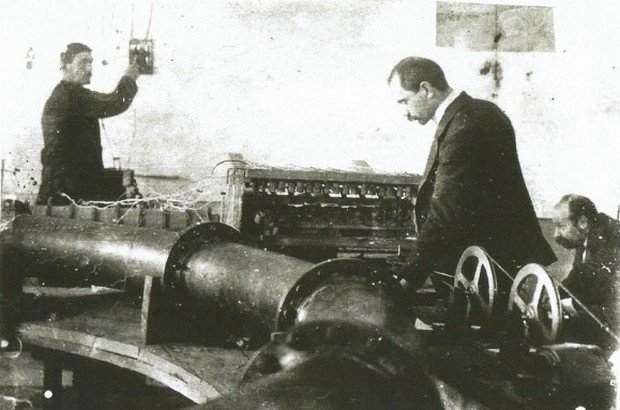''Singapore's Elon Musk' brings Sergey Korolev's unrealized project to Tatarstan''
Why the construction of Kazan-Bugulma railway was frozen and what to do if Tatarstan doesn’t get the high-speed railway
Several dozens of students, engineers and innovative entrepreneurs gathered in a small auditorium in the city of Innopolis to listen to a lecture by the innovation guru from Singapore, Yangzhou Pao Mo. The famous futurist and owner of San Junipero Inc. arrived in Russia just for two days, and from Moscow he immediately flew to Kazan, where he already has a formed devoted fan club. About the ideas that are changing the world already today and how all this is connected with the development of infrastructure of Tatarstan — read the material of Realnoe Vremya.
''I'm not going to Mars''
Although Yangzhou Pao Mo does not like being compared to the founder of Tesla and Space X, it was extremely difficult to resist drawing an analogy with the ideas of Elon Musk during the Kazan visit. Because in Innopolis Pao Mo spoke not about artificial intelligence and not about the topic of transhumanism close to him. The guest elaborated on the project of a high-speed vacuum train. A similar project by Elon Musk is well known as Hyperloop. Hyperloop is a transport capsule that moves through a pipeline at a speed of up to 1,220 km per hour. Pipelines can be both above ground and underground. Pao Mo claims that his high-speed transport of the future has a completely different background.
''I'm not going to Mars, all my interests are here — on Earth,'' Pao Mo likes to repeat. At the same time, he does not conceal the fact that for many years he has been collecting everything related to space exploration and the great space race of superpowers during the Cold War. In his hobby, he could not ignore the figure of outstanding designer and father of the Soviet space programme Sergey Korolev. As Pao Mo claims, the Kazan period of life of the designer was connected not only with rocket building for the needs of the Soviet military aviation.

Hyperloop in the name of Stalin
It is known that Sergey Korolev came to Kazan at the end of 1942 to work in the Experimental Design Bureau No. 16 of the 4th Department of NKVD, in plain language — in a 'sharashka' where scientists and engineers lived in a semi-prison mode and worked under the supervision of security officers. The futurist from Singapore claims that he has evidence that Korolev was working on a pilot project of a vacuum train in Kazan. Why in the midst of the war for such an experiment they chose the Soviet Tataria — the guest could not answer. He assumes that remoteness of the region from the front and relative proximity to Moscow played their roles. The main motive why the authorities approved the project he believes to be military purposes when quick troop shifts or evacuation of industrial objects often required non-standard decisions.
Yangzhou Pao Mo believes it is extremely important that Russia, independently from other intellectual centres, has its own groundworks in creating the revolutionary mode of transport. Already in the early twentieth century in Tomsk, Professor Boris Weinberg developed the project of a train, weightless cars of which transport inside a copper pipe, from which the air is pumped out. Due to the lack of friction, they will maintain a colossal speed, being only once set in motion. Cars in vacuum are supported by electromagnets placed along the route of the train. In the laboratory of Tomsk Institute of Technology, Weinberg set up relevant experiments in 1911-1913, and then the ideas of Weinberg were popularized by the author of Physics for Entertainment, Yakov Perelman. Korolev as well as the curators of Soviet science knew everything about this.
Tatvakuummagistral from Kazan to Bugulma
Denis Podkosogorsky, Associate Professor at Kazan State Technical University, who took the floor after the guest, said that the Tatar Autonomous Soviet Socialist Republic (Tatar ASSR) was chosen as an experimental site for the reason that there was a ready base for the construction of aboveground hyperloop. Back in April 1939, people's commissar of railways Lazar Kaganovich approved the plan for the construction of the Kazan-Chistopol-Bugulma railway. The route was supposed to be 354 km long and connect the central regions of the RSFSR with Southern Urals. After that, construction works began on the section from Derbyshki to the village of Kon in Pestrechinsky district. From the construction there preserved earth mounds, overgrown with grass and trees, and in the area of the village of Aki there still remained laid under the hills stone pipes.
The latest information about the construction of the railway from Kazan to Bugulma refers to 1942. They as if 'forgot' about the project, switching to the railway from Sviyazhsk to Ulyanovsk. By a strange coincidence, at the time in Kazan there arrives Sergey Korolev, and the next 1943 — the year of the foundation of the Kazan factory Vakuummash, which during the first years of operation was disguised in typical Soviet fashion as a plant to repair tractor engines.
The speakers claimed that they managed to get scans of documents prepared by Korolev and his staff during the development of Tatvakuummagistral. According to calculations by Sergey Pavlovich, the way from Kazan to the largest city in the south-east of Tatarstan at that time was to take only 22 minutes. The work plan was drawn up until 1947, and then the same vacuum lines like Kazan-Bugulma were to appear in other parts of the USSR. Unfortunately, during the war, they couldn't wait for 5 years, the country faced a lot more urgent needs of defence. Beria personally ordered to close the experiment. The secrecy of documents has long been removed, but they are never demanded. ''People have ceased to believe in the dream. It is easier for them to believe in oil prices and sales in stores. Apparently, these sentiments have reached Russia as well,'' stated the multimillionaire from Singapore.

Is the futurist going to invest?
For Tatarstan, which has been awaiting the construction of Moscow-Kazan high-speed highway for almost 10 years, the idea of a ten-minute transportation over a distance of hundreds of kilometres, expressed by Yangzhou Pao Mo, is like salt in the wound. Realnoe Vremya has already reported that not long ago the commercial partnership Ural High-Speed Highway advanced the initiative to build the HSR between the cities of Yekaterinburg and Chelyabinsk. At the same time, the ministry of transport and roads of Tatarstan insists that it is necessary to build the HSR first from Kazan-Nizhny Novgorod. Independent experts propose to focus on the construction of the railway between Kazan and Ufa and see it as part of the new Silk Road, which will connect Europe and China.
Will Yangzhou Pao Mo and his company Sun Juniper Inc. become investors in the real project on the territory of Tatarstan? The guest from Singapore answered the question of Realnoe Vremya in a very evasive way. He is going to return to Russia because he wants to visit Tomsk, where Boris Weinberg, another ideologist of vacuum transport, worked. In the next visit he expects to come over to Kazan and visit what is left from the unrealized road Kazan-Bugulma. But the very fact that the futurologist was given a tribune in Innopolis, which is one of the flagship projects of Tatarstan, indirectly indicates that the mutual interests are not only in scientific experiments of the past.
''If we don't wait until the construction of the HSR from Moscow is started, we need to give a clear signal that we will then start building ourselves with the involvement of international investors. We are studying what the Singapore guest says and even met with him in his homeland. The ideas many seem too optimistic, but given that his company makes a profit, unlike the unprofitable Tesla, there is a rational kernel here. Transport connection of the capital of the republic with the south-east of the region is one of our priorities,'' a source close to the Kazan Kremlin commented to Realnoe Vremya.

''It is known that today our nearest and rather infamous neighbour, Ukraine, is claiming superiority in launching hyperloop in Old World. A test site is being prepared in the city of Dnepropetrovsk, which the current illegitimate government renamed into Dnipro. We must accept the challenge and be the first. Given the permanent political instability, with the participation of Saakashvili, Savchenko and others, we can be confident that it is us who is going to succeed,'' said Konstantin Tsaregradtsev, the president of the Russian Institute of Geostrategy, known for uncompromising performances on political talk shows, who also turned out to be in the audience of Innopolis.
''People like Yangzhou Pao Mo, Jack Ma, Bill Gates, Mark Zuckerberg and Elon Musk are born once in a blue moon. They make it clear that the possibilities of human mind are endless, the creative potential of entrepreneurship is endless, and inspire you to work. I am sure that this story will take off,'' Kirill Ulibin, the director of Breakout Innovation Incubator, shared his impressions from the meeting.
Traditional tea with chuck-chuck was awaiting for all the guests and speakers after the presentation.